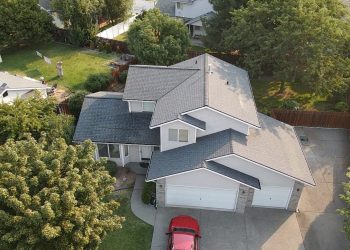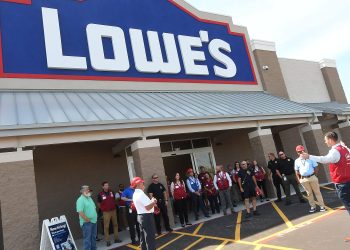Kim Schmadeke braces herself March 10 as she walks to her mailbox in the Kirkwood Estates mobile home park in Cedar Rapids. (Daniel Acker/Washington Post)
CEDAR RAPIDS — On the morning Kim Schmadeke decided to make a final plea to the U.S. government for help, she peered out through drawn curtains at her battered neighborhood.
Trees on the ground. Tarps over roofs. More tarps over shredded sides of homes — all remnants of a freak inland hurricane that blew through on Aug. 10, 2020, tore down half the city’s trees and damaged 90 percent of its homes. It was a brutal storm that was especially damaging to mobile home parks such as Kirkwood Estates, where Schmadeke lived and where, seven months later, she was the last person who had not given up on getting help Washington officials vowed in the days after the disaster.
“This ordeal is wreaking havoc on my life,” she began typing on her computer, beneath a buckling ceiling. On the floor were tubs marking the areas too soggy to step. In the bathroom, the toilet was tilting because of the rotting floor and the shower had stopped working, leaving her to clean herself up at the kitchen sink.
She read back what she had typed, imagining how the words would sound to the people she was sending them to at the Federal Emergency Management Agency. “Does that sound stupid?” she…

























































![Global Health and Wellness Market to Garner Revenue of $6,543.4 Million at a CAGR of 4.8% from 2019-2026 Exclusive Report [Pages-110] by Research Dive](https://newzznow.com/wp-content/uploads/2021/04/95a867ce-3780-4ace-8da5-32bead68c6b7-120x75.jpeg)

